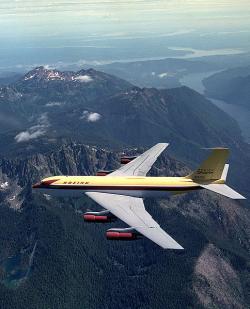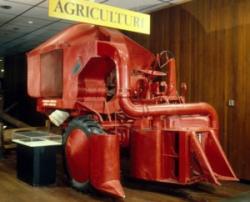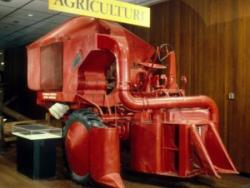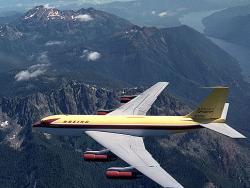The 367-80 is the prototype for most jet transports. Its success was due largely to its mechanical systems, including turbine engines with thrust reversers and noise suppressors, redundant hydraulic control systems, and an improved cabin-pressurization system. Honeycomb flap panels were introduced, along with a strong, lightweight structural design that controlled fatigue cracking. These led to several innovations in aircraft tooling and manufacturing techniques.
The Dash-80 was the first commercial airliner economical enough to take the US airline industry off subsidy.
Smithsonian

YearAdded:
Image Credit: Courtesy Wikipedia/Boeing Dreamscape (CC BY 2.0)Image Caption: Prototype of the Boeing 707 and most jet transport systems, the Boeing 367-80 established economic feasibility of commercial air travel.Era_date_from: 1954
1994

"The development of the cotton picker was the most important single factor which enabled the American cotton industry to stay alive," observed Dr. George S. Buck, Jr., director of research for the National Cotton Council recenty.
Some 96% of the 1969 U.S. cotton crop was harvested by machines, points out J.W. Wegener, manager of International Harvester's Memphis Works manager.
"Old Red" was built by International Harvester in 1943, retired in 1959, and restored in 1964.
YearAdded:
Image Credit: Photo Courtesy of ASABEImage Caption: "Old Red" now resides in the National Museum of History & Technology, Smithsonian Institution, Washington, DC.Era_date_from: 1943
1978
Innovations

"The development of the cotton picker was the most important single factor which enabled the American cotton industry to stay alive," observed Dr. George S. Buck, Jr., director of research for the National Cotton Council recenty.
Some 96% of the 1969 U.S. cotton crop was harvested by machines,… Read More

The 367-80 is the prototype for most jet transports. Its success was due largely to its mechanical systems, including turbine engines with thrust reversers and noise suppressors, redundant hydraulic control systems, and an improved cabin-pressurization system. Honeycomb flap panels were introduced… Read More


